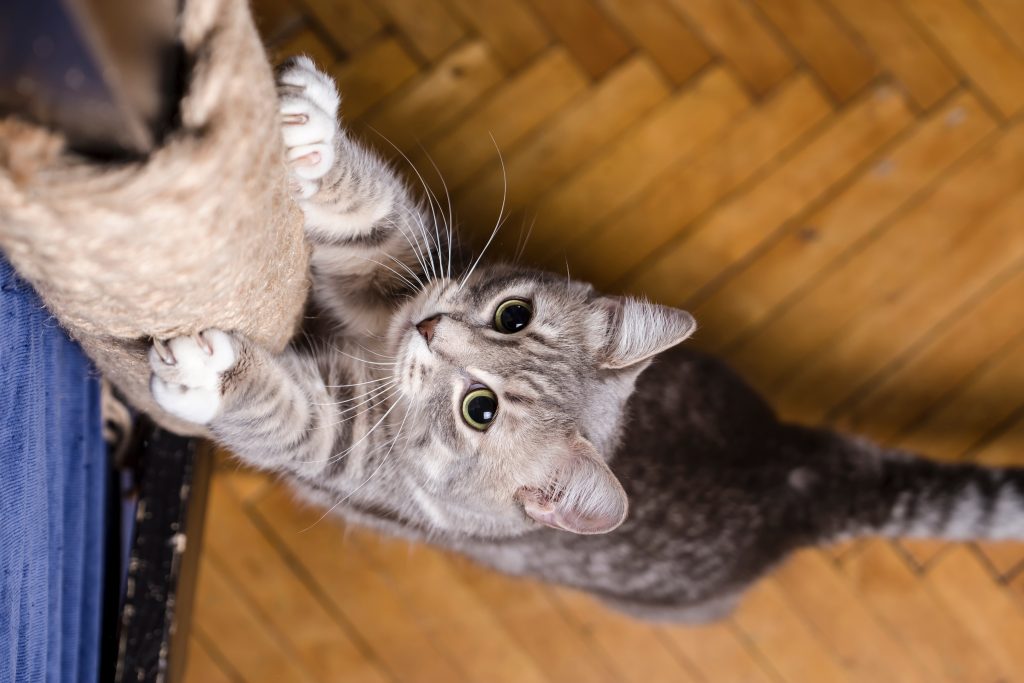Scratching is natural and cats have a strong instinctual motivation to engage in this behaviour. It is impossible to prevent.
Why do cats need to scratch?
Scratching serves a few purposes, the most basic of which is to maintain a cat’s claws. Another benefit of scratching is the full body stretch it provides to felines.
Cats are territorial and primarily more solitary than social, so they use scratching to mark their territory. Marking helps them feel confident in their environment and reduces stress.
Scratching is beneficial for a cat’s well-being, and we should never try to hinder this behaviour, but since our cats live in our homes, this behaviour can become destructive. It is very important for us to provide a desirable and appropriate place for our cats to scratch, so that they do not decide to scratch our furniture.
Surfaces:
There are a variety of surfaces available that are appealing to cats. Sisal rope, corrugated cardboard, carpet or wood are all appropriate surfaces. Cats may have different preferences or choose different surfaces at different times. Giving them multiple options limits the chance they will choose your couch.
Location:
Scratchers should be located close to where your cat likes to rest. Rest areas are where cats need to feel the most comfortable and where they tend to mark their territory the most, since resting is a vulnerable state.
Now, let’s get even more scientific about scratching.
Cats leave behind pheromones as they scratch.
Pheromones are natural, chemical signals that act as a form of communication between animals of the same species. Territorial pheromones send messages that reassure cats they are in a safe, familiar place, or indicate “this is mine” and act as a sign to other cats that there is a cat living in the territory. These reassurances relieve stress for cats. These pheromones are released from a few spots on the body including their face and between their toes (released when scratching).
When cats scratch, they leave a visual sign of their territory (scratch marks) as well as the pheromone message. The visual and pheromone messages encourage cats to continue revisiting the same scratching area. This becomes problematic when the favourite scratching area is a piece of your furniture, but these messages can be used to teach cats where to scratch as well.
FELISCRATCH by FELIWAY® is a product that contains territory pheromones and is applied to a scratching post to draw cats to scratch there instead of on furniture. FELISCRATCH also contains catnip as an attractant and is blue in colour to imitate the visual signal of scratch marks.

Appropriate scratching surfaces in the right location, along with FELISCRATCH by FELIWAY®, can help reduce destructive scratching, or prevent it all together, while also improving the well-being of your cat.
Visit your local Global Pet Foods to learn more about scratching, and find all the products you need for your cat.
Also visit FELIWAY® online to learn more about FELISCRATCH and other pheromone products that can help your cat.













